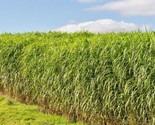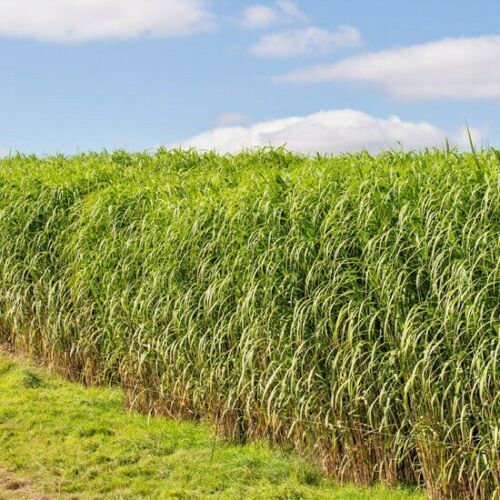Rendered at 08:44:50 07/14/25
1000+ SWITCH GRASS Seeds Native Prairie Tall Grass Clumping Ornamental Perennial
$95.55 MXN
Los buques de
Indonesia

Las opciones de envío
$354.50 a Worldwide
Los buques de
Indonesia

Política de oferta
OBO - El vendedor acepta ofertas en este artículo.
Detalles
La política de devoluciones
Protección de compra
Opciones de pago
PayPal accepted
PayPal Credit accepted
Venmo accepted
PayPal, MasterCard, Visa, Discover, and American Express accepted
Maestro accepted
Amazon Pay accepted
Nuvei accepted
Las opciones de envío
$354.50 a Worldwide
Los buques de
Indonesia

Política de oferta
OBO - El vendedor acepta ofertas en este artículo.
Detalles
La política de devoluciones
Protección de compra
Opciones de pago
PayPal accepted
PayPal Credit accepted
Venmo accepted
PayPal, MasterCard, Visa, Discover, and American Express accepted
Maestro accepted
Amazon Pay accepted
Nuvei accepted
Rasgos del artículo
| Categoría: | |
|---|---|
| cantidad disponible: |
10 En stock |
| Condition: |
New |
| UPC: |
808420844002 |
| Sunlight: |
Full Sun |
| Soil Type: |
Loam |
| Season of Interest: |
Summer |
| Watering: |
Medium |
| Indoor/Outdoor: |
Indoor & Outdoor |
| MPN: |
KLDL5895 |
| Brand: |
Sismi |
| Growth Rate: |
Medium |
Detalles del anuncio
| Envío de descuento: |
No ofrece el envío combinado |
|---|---|
| Publicado en venta: |
July 3 |
| Artículo número: |
1757188106 |
Descripción del Artículo
Mix Dwarf Groundcover seeds will give you a stunning carpet of vibrant, small blooms, perfect for borders, container edges, or pathways. Beyond their beauty, these dwarf varieties are known for attracting bees and other pollinators. While often considered tender perennials in colder climates, in tropical regions like Banjarmasin, they can truly thrive as true perennials. Caring for them is relatively straightforward with the following guidelines: 1. Seed Sowing Timing: Given Banjarmasin's tropical climate, you can sow Verbena Compacta seeds year-round. However, try to avoid periods of extremely heavy rainfall, which can be detrimental to young seedlings. Location: Choose a spot that receives full sun for at least 6-8 hours daily. Verbena loves the sun and will produce the most blooms when it gets plenty of light. Soil Preparation: Verbena thrives in well-draining, light soil that is slightly acidic to neutral (pH 6.0-7.5). If your soil is heavy, mix in sand or compost to improve drainage. Avoid overly rich soil, as this can reduce flowering. Sowing Method: Scatter the seeds on the surface of your prepared soil. Verbena seeds need light to germinate, so do not cover them too deeply with soil. Just gently press them onto the soil surface to ensure good contact. Water the soil surface carefully with a fine spray to avoid dislodging the seeds. Keep the soil consistently moist until germination, which typically takes 14-28 days. 2. Watering Early Growth: After germination and while seedlings are young, keep the soil consistently moist but never waterlogged. Mature Plants: Once established, Verbena Compacta is quite drought-tolerant. Water deeply but infrequently, allowing the soil to dry out slightly between waterings. Overwatering is a common cause of issues with Verbena, so ensure the soil never stays soggy. 3. Fertilizing Verbena Compacta generally doesn't require a lot of fertilizer, especially if planted in reasonably fertile soil. If you feel the need to fertilize, apply a balanced fertilizer with a slightly higher phosphorus content (to encourage blooming) at half strength every 4-6 weeks during the active growing season. Avoid high-nitrogen fertilizers, which can produce lots of foliage but fewer flowers. 4. Pruning (Deadheading) While not strictly necessary for dwarf varieties like this one, deadheading spent blooms can encourage more flowering and keep the plants looking tidy. Simply pinch or snip off faded flower heads. If the plant looks a bit "leggy" mid-season, you can prune the entire plant back by about one-third to encourage bushier new growth. 5. Pest and Disease Control Verbena Compacta is generally a robust plant and is quite resistant to most pests and diseases. Pests: Occasionally, aphids or spider mites might appear, especially in dry conditions. Spray with a strong jet of water or use organic insecticidal soap if needed. Diseases: The main issues are usually related to excess moisture, such as root rot or powdery mildew. Ensure good air circulation and avoid overwatering to prevent these. 6. Spreading and Expansion As a groundcover, Verbena Compacta will spread naturally. If you wish to control its spread, you can simply trim back the edges.
Added to your wish list!

- 1000+ SWITCH GRASS Seeds Native Prairie Tall Grass Clumping Ornamental Perennial
- 10 in stock
- Price negotiable
Get an item reminder
We'll email you a link to your item now and follow up with a single reminder (if you'd like one). That's it! No spam, no hassle.
Already have an account?
Log in and add this item to your wish list.


